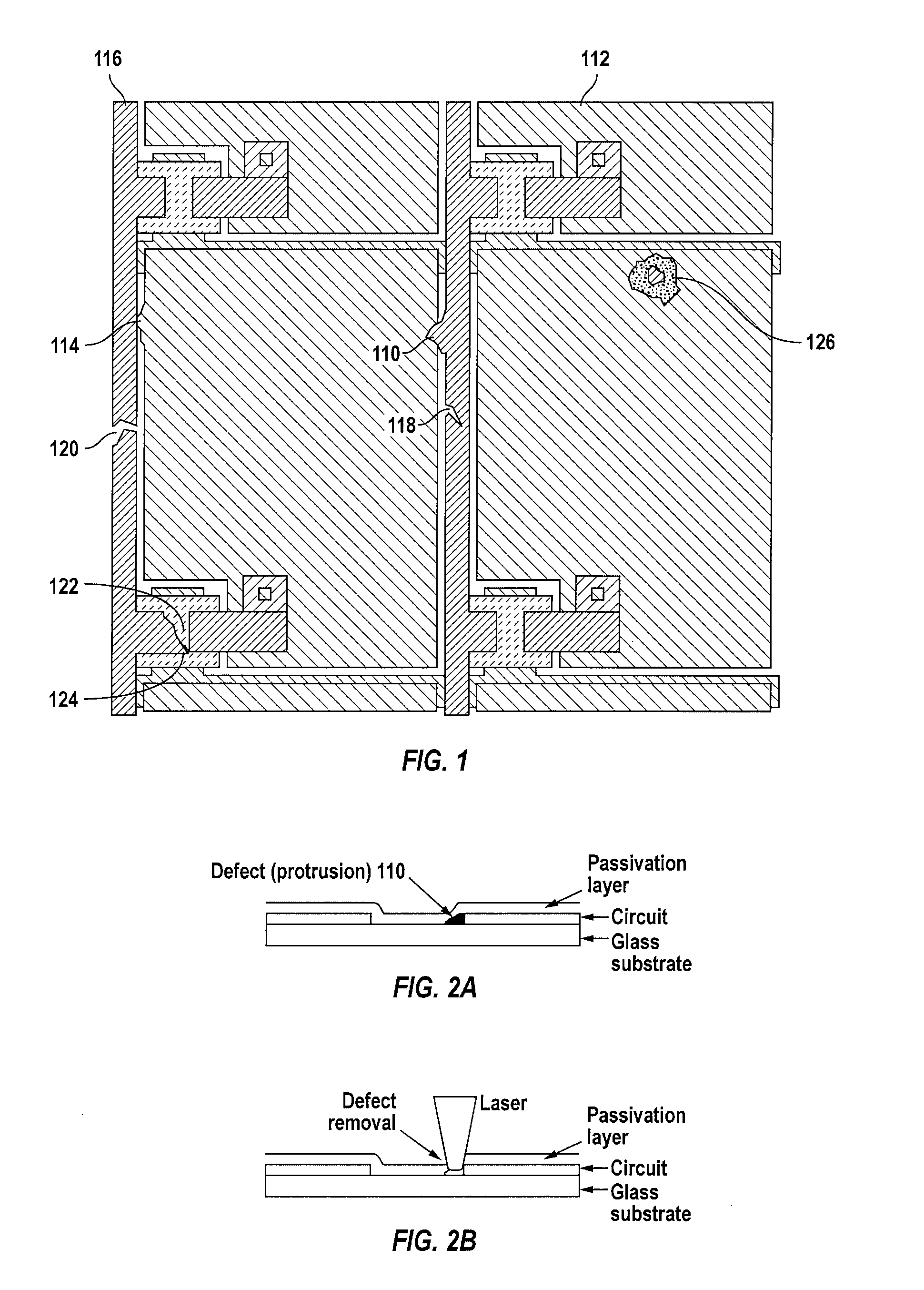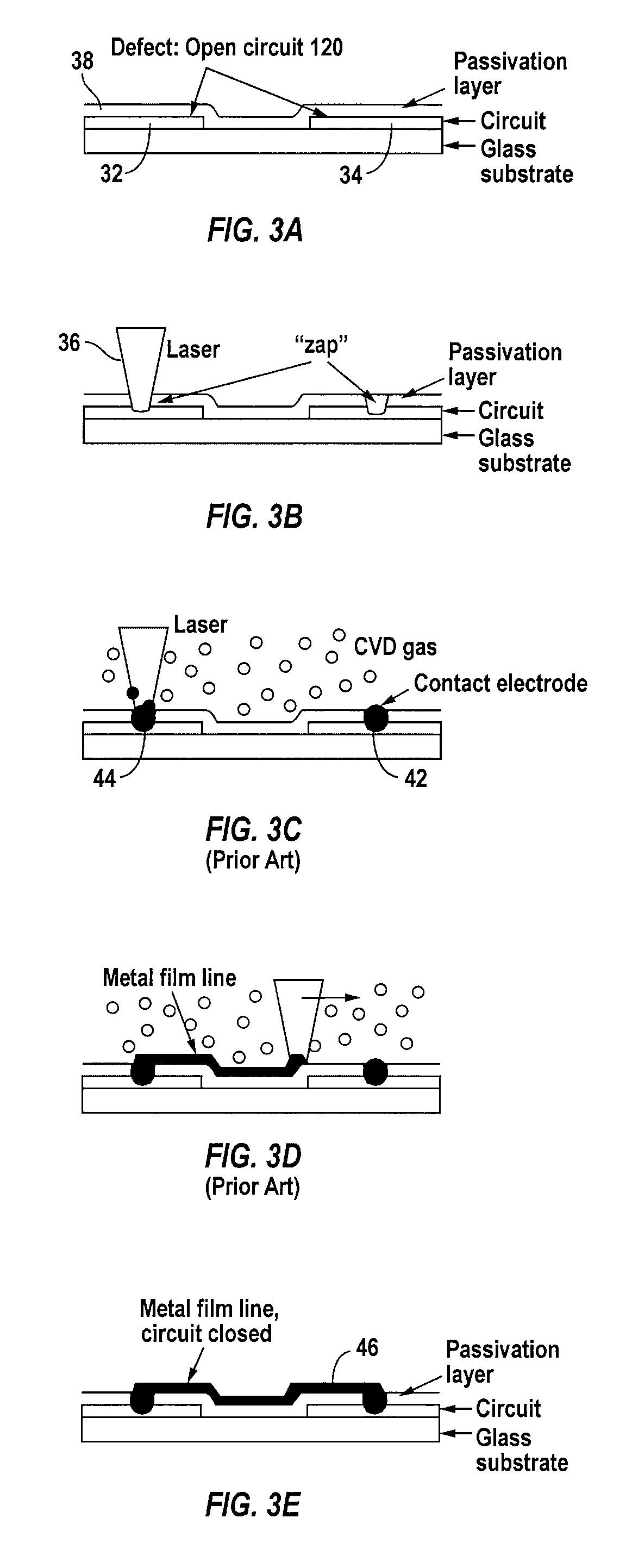Deposition Repair Apparatus And Methods
a technology of deposition and repair apparatus, which is applied in the manufacture of electric discharge tubes/lamps, lighting and heating apparatus, instruments, etc., can solve the problems of mask problems, unavoidable defects, and affecting the electrical and/or optical performance of the final lcd produ
- Summary
- Abstract
- Description
- Claims
- Application Information
AI Technical Summary
Benefits of technology
Problems solved by technology
Method used
Image
Examples
Embodiment Construction
[0078]An apparatus, in accordance with one embodiment of the present invention, includes integrated review, material removal and material deposition functions. The apparatus performs the review, material removal and material deposition (transfer) operations along the same optical axis (path). The apparatus includes, in part, a camera, a pair of lenses, and one or more lasers. A first lens is used to focus the camera along the optical axis on a structure formed on the target substrate undergoing review. The first lens is also used to focus the laser beam on the structure to remove a material present thereon if the reviewed structure is identified as requiring material removal. The second lens is used to focus the laser beam on a ribbon to transfer a rheological compound from a recessed well formed in the ribbon to the structure if the reviewed structure is identified as requiring material deposition.
[0079]For purposes of the invention described herein, the terms “ink” and “rheologica...
PUM
| Property | Measurement | Unit |
|---|---|---|
| Depth | aaaaa | aaaaa |
| Depth | aaaaa | aaaaa |
| Fraction | aaaaa | aaaaa |
Abstract
Description
Claims
Application Information
 Login to View More
Login to View More - R&D
- Intellectual Property
- Life Sciences
- Materials
- Tech Scout
- Unparalleled Data Quality
- Higher Quality Content
- 60% Fewer Hallucinations
Browse by: Latest US Patents, China's latest patents, Technical Efficacy Thesaurus, Application Domain, Technology Topic, Popular Technical Reports.
© 2025 PatSnap. All rights reserved.Legal|Privacy policy|Modern Slavery Act Transparency Statement|Sitemap|About US| Contact US: help@patsnap.com



